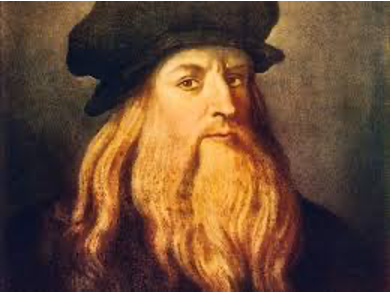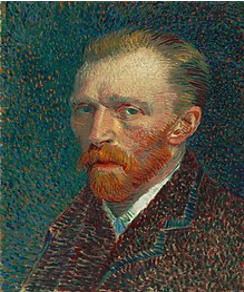Arts
Leonardo da Vinci (1452–1519) was an Italian polymath of the High Renaissance, often regarded as the quintessential "Renaissance man" due to his extraordinary versatility and contributions across multiple fields. Below is a concise overview of his life, achievements, and legacy, incorporating insights from the provided search results and structured to address his key roles as an artist, scientist, engineer, and more.
Early Life and Background
- Birth and Upbringing: Born on April 15, 1452, in or near Vinci, Italy, Leonardo was the illegitimate son of Ser Piero, a Florentine notary, and Caterina, a peasant woman. He grew up primarily in his father’s household, receiving a basic education in reading, writing, and mathematics, but his artistic talents were evident early.
- Training: At around age 15, Leonardo apprenticed with Andrea del Verrocchio, a prominent Florentine painter and sculptor. In Verrocchio’s workshop, he honed skills in painting, sculpting, and diverse technical fields like mechanics and metallurgy, working alongside artists like Sandro Botticelli. His talent shone early, notably in his contribution to Verrocchio’s Baptism of Christ (c. 1475), where his angel outshone his master’s work.
Artistic Achievements
Leonardo is renowned for his groundbreaking contributions to art, though his output was small—fewer than 20 paintings are definitively attributed to him, many unfinished due to his perfectionism and experimentation.
- Major Works:
- Mona Lisa (c. 1503–19): A portrait famous for its enigmatic smile, innovative sfumato technique (soft transitions between light and dark), and dynamic composition. It’s housed in the Louvre, Paris, and remains a cultural icon.
- The Last Supper (1495–98): A mural in Milan’s Santa Maria delle Grazie, depicting Jesus and his apostles with masterful composition and emotional depth. It introduced new perspective techniques but deteriorated due to Leonardo’s experimental methods.
- Vitruvian Man (c. 1490): A pen-and-ink drawing blending art and science, illustrating human proportions based on Vitruvius’ principles. It symbolizes Leonardo’s fusion of anatomy and aesthetics.
- The Virgin of the Rocks (two versions, c. 1483–1508): Commissioned for a Milanese confraternity, these paintings showcase his use of chiaroscuro and atmospheric perspective.
- Innovations: Leonardo revolutionized painting with techniques like sfumato and chiaroscuro, creating lifelike figures and realistic spatial depth. His drawings, such as Studies for the Nativity, reveal meticulous preparation and observation.
Scientific and Engineering Contributions
Leonardo’s insatiable curiosity led to extensive studies documented in thousands of notebook pages, now known as codices (e.g., Codex Atlanticus). His work anticipated modern scientific methods, though he rarely published, limiting his contemporary influence.
- Fields of Study: He explored anatomy (dissecting cadavers to study muscles and organs), optics, hydrodynamics, botany, geology, and aerodynamics. His anatomical drawings, created with Marcantonio della Torre, were remarkably accurate.
- Inventions: Leonardo sketched designs for futuristic devices, including a tank, parachute, helicopter-like flying machine, and submarine, though most were not feasible in his time. He also designed practical machines like cranes and water systems.
- Scientific Approach: His saper vedere (“knowing how to see”) philosophy emphasized observation and drawing as tools for understanding nature’s laws, laying the groundwork for modern scientific illustration.
Career and Patronage
- Florence and Milan: After leaving Verrocchio’s workshop, Leonardo worked in Florence (1472–c. 1482, 1500–1508) and Milan (c. 1482–99, 1508–13) under Ludovico Sforza, creating art, designing court festivals, and engineering military devices.
- Later Years: He worked in Rome (1513–16) for the Pope, then moved to France in 1517 at the invitation of King Francis I, serving as “Premier Painter, Engineer, and Architect” until his death on May 2, 1519, in Clos-Lucé.
- Relationships: Leonardo maintained close ties with pupils like Salaì and Francesco Melzi, who inherited his works. Speculation about his personal life, including possible homosexuality, stems from a 1476 sodomy charge (dismissed) and later analyses by figures like Sigmund Freud.
Personality and Legacy
- Character: Described as charming, reserved, and elegant, Leonardo was vegetarian, loved animals, and dressed flamboyantly. His notebooks, written in mirror script, reflect his relentless curiosity and tendency to leave projects unfinished due to his broad interests.
- Impact: Leonardo epitomized the Renaissance humanist ideal, blending art and science. His influence on art, particularly in composition and light, shaped future generations, rivaled only by Michelangelo. His scientific inquiries, though underappreciated in his time, foreshadowed modern discoveries.
- Modern Relevance: His works, like the Mona Lisa and Vitruvian Man, remain cultural touchstones, inspiring everything from academic study to popular media (e.g., The Da Vinci Code). His notebooks continue to reveal his genius, with some drawings still undeciphered.

(14/15 April 1452 – 2 May 1519)

(30 March 1853 – 29 July 1890)







